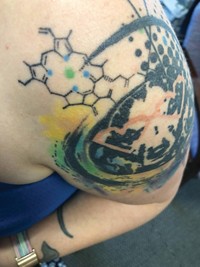Advertisement
Grab your lab coat. Let's get started
Welcome!
Welcome!
Create an account below to get 6 C&EN articles per month, receive newsletters and more - all free.
It seems this is your first time logging in online. Please enter the following information to continue.
As an ACS member you automatically get access to this site. All we need is few more details to create your reading experience.
Not you? Sign in with a different account.
Not you? Sign in with a different account.
ERROR 1
ERROR 1
ERROR 2
ERROR 2
ERROR 2
ERROR 2
ERROR 2
Password and Confirm password must match.
If you have an ACS member number, please enter it here so we can link this account to your membership. (optional)
ERROR 2
ACS values your privacy. By submitting your information, you are gaining access to C&EN and subscribing to our weekly newsletter. We use the information you provide to make your reading experience better, and we will never sell your data to third party members.
Consumer Safety
Common method fails to detect asbestos in cosmetics
US federal interagency group recommends additional technique to confirm results
by Britt E. Erickson
January 19, 2022
| A version of this story appeared in
Volume 100, Issue 3

Cosmetics manufacturers often use an analytical method adopted by the industry in 1976 to determine whether talc-containing products are contaminated with the carcinogen asbestos. That method, however, doesn’t always detect asbestos fibers that are present, according to a white paper released Jan. 13 by the US Food and Drug Administration.
Written by a federal interagency working group, the white paper recommends that cosmetics manufacturers go beyond the 1976 method—X-ray diffraction followed by polarized light microscopy. The group suggests using X-ray diffraction followed by polarized light microscopy and transmission electron microscopy.
The FDA has been testing talc-containing cosmetics for asbestos for several years using the more extensive method. The agency became aware “that methods employed by some industry members to test for asbestos in talc-containing cosmetic products may not always detect the presence of asbestos,” Susan Mayne, director of the FDA’s Center for Food Safety and Applied Nutrition, says in a statement.
Talc is used in many cosmetics, including baby powder and blush, to prevent caking and absorb moisture. It is a naturally occurring mineral—hydrous magnesium silicate—mined from the earth. Asbestos is also a naturally occurring silicate mineral. Deposits of the two can be located near each other, and mining can yield talc contaminated with asbestos. Concerns about such contamination date to the 1970s.
It is unclear whether the FDA will issue formal guidance to the cosmetics industry regarding a standardized method for detecting asbestos in talc-containing products. First, the agency plans to have the white paper peer reviewed.
The FDA detected asbestos in nine cosmetics and advised consumers not to use those products in 2019. It did not find any asbestos in 50 cosmetics that it tested in 2021. The agency plans to test another 50 products this year.
As part of a 2021 court settlement, the US Environmental Protection Agency agreed to evaluate whether exposure to asbestos in talc-containing products is associated with harm to human health. The agency is currently evaluating the risks of asbestos under the Toxic Substances Control Act.



Join the conversation
Contact the reporter
Submit a Letter to the Editor for publication
Engage with us on Twitter